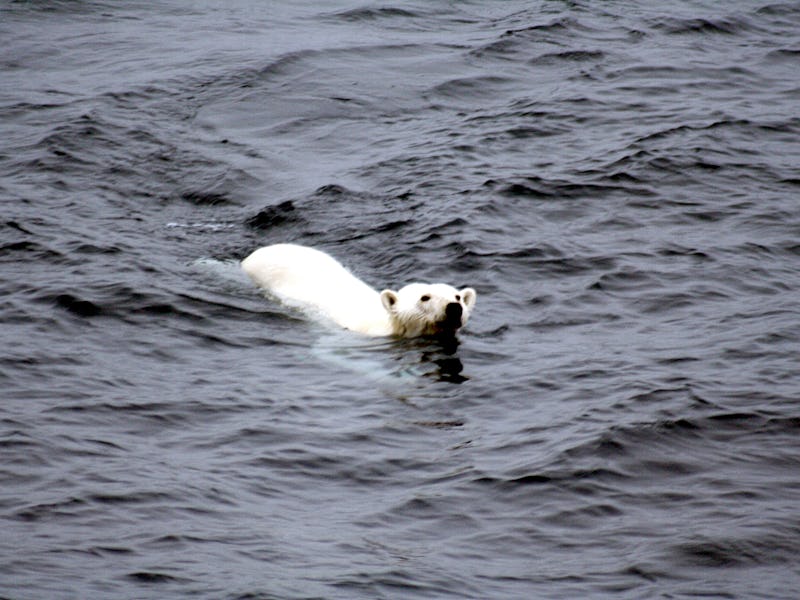4 Ways the World Will Be Weirder When the Arctic Ice is Gone
Planet Earth will never be the same again.

Imagine a world map, except at the top there’s a sea of blue where there once was white. This world is coming, and it’s coming fast. How quickly it comes depends on how much carbon dioxide people continue to pump into the atmosphere. At current rates, it’s safe to say the Arctic Ocean will melt entirely at one point one summer in the next two or three decades.
That world will be a very, very different place. Arctic ice matters not just to polar bears, but to the entire planet. It works as a sort of global air conditioner, cycling cool air and water further south and keeping the jet streams moving along. What happens when the air conditioner breaks? We’ll only know the specifics when it happens, but here’s what scientists expect.
New Predators Moving In
Already, residents of the High Arctic are beginning to see a rather strange sight: killer whales. Orcas aren’t known for venturing to the far north, and yet as the ice goes away, new predators are increasingly being spotted. They’re feasting on seals and whales that are accustomed to living in relatively safe waters, taking shelter around sea ice floes. It’s well known that polar bears will struggle to stay fed in an increasingly ice-free Arctic, but other marine mammals could be under new stress, too.
There will be winners and losers for the animal kingdom in a new, ice-free Arctic. The warmer water might spur plankton blooms that go on to feed all manner of sea creatures up the food chain. Outcomes are uncertain, but what’s for sure is that major disruption is about to occur.
Bigger Storms
Big storms were all but unheard of in Arctic waters until recent decades, and they’re set to become bigger, more frequent, and more devastating. Warmer water brews bigger storms, and lack of sea ice makes it easier for winds to whip them up over longer distances.
In 1999 an unprecedented storm surge flooded the Mackenzie Valley Delta and killed vegetation over an area of at least 12 square miles by increasing salt levels in the soil beyond toxic levels. Arctic storms also cause severe erosion — parts of Alaska’s north coast have seen erosion levels up to 100 feet per year, and almost 200 Alaska Native villages are threatened by eroding land and rising seas.
Weird Weather Around the Globe
An ice-free Arctic will affect everyone on this planet, whether they’re aware of it or not. The Arctic is already warming twice as fast as the rest of the planet, and the major consequence of this is the weakening of jet streams, which gain strength from temperature differentials from north to south. What this means in practical terms is that weather will persist longer in a given location — droughts will be worse, but flooding will be worse, too. Expect ocean current patterns to get similarly weird and unpredictable.
Higher Sea Levels
Sea ice does not greatly contribute to sea level rise as it melts, because it is already floating, which means it’s already displacing its own weight. However, fresh water takes up more space than salt water, so as the Arctic Ocean gets fresher with the increased ice melt it will contribute marginally to sea level rise. A greater contribution will come, though, as the temperature of Arctic seas rise, since warmer water is less dense than cold water. And because northern waters mix with those further south, the new warmer water will spread across the globe. Further, the Arctic will absorb more heat as it loses ice, because ice reflects more sunlight than the open ocean.
Sea level rise is bad — really bad. It’s already swallowed up six of the Solomon Islands, and coastal areas around the world are severely threatened. We can’t build levees big enough and strong enough to permanently hold back the rising tides. Eventually we’re going to have to face the realities of a retreat from the coast.